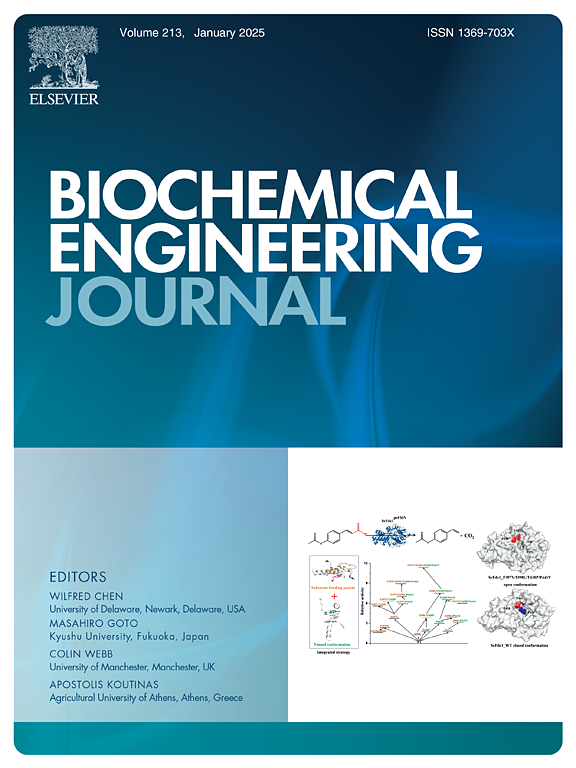Enhanced removal of TN in shale gas wastewater by a novel porous polymer monolith immobilized microorganisms
IF 3.7
3区 生物学
Q2 BIOTECHNOLOGY & APPLIED MICROBIOLOGY
引用次数: 0
Abstract
Shale gas flowback and produced water (SGFPW) pose significant challenges to biotechnology due to their high salinity. In this study, we explored a novel method utilizing an amphiphilic copolymer of methyl methacrylate and acrylamide (p(MMA-AAM)) and powdered activated carbon (PAC) to modify poly(ether sulfone) (PES). We prepared a series of monoliths for microorganism immobilization using both thermal-induced phase separation and non-solvent-induced phase separation. Characterization of the monoliths via fourier transform infrared spectroscopy (FTIR), scanning electron microscope (SEM), nitrogen adsorption-desorption analysis revealed improved hydrophilicity in the p(MMA-AAM)-modified monoliths and increased specific surface area (SSA) in monoliths with PAC addition. Particularly, the highest SSA was observed for the 0.5 g PAC (0.5-PAC/PES) monolith at 235.19 m2/g. Wastewater treatment experiments demonstrated that the 0.5-PAC/PES system exhibited superior pollutant removal performance, and it achieved nearly 100 % removal of NO3- and total nitrogen (TN) in simulated SGFPW. Besides, the removal rates of TN and total organic carbon (TOC) in actual SGFPW by the 0.5-PAC/PES system were 1.5 times and 1.3 times higher, respectively, than those achieved with suspended microorganisms. After 96 h biological treatment, the extracellular polymeric substances (EPS) content of 0.5-PAC/PES was highest, showing its positive role in enhancing microbial activity. This work introduces a new approach to immobilize microorganisms, enhancing biological activity for SGFPW treatment under high salinity conditions.
求助全文
约1分钟内获得全文
求助全文
来源期刊

Biochemical Engineering Journal
工程技术-工程:化工
CiteScore
7.10
自引率
5.10%
发文量
380
审稿时长
34 days
期刊介绍:
The Biochemical Engineering Journal aims to promote progress in the crucial chemical engineering aspects of the development of biological processes associated with everything from raw materials preparation to product recovery relevant to industries as diverse as medical/healthcare, industrial biotechnology, and environmental biotechnology.
The Journal welcomes full length original research papers, short communications, and review papers* in the following research fields:
Biocatalysis (enzyme or microbial) and biotransformations, including immobilized biocatalyst preparation and kinetics
Biosensors and Biodevices including biofabrication and novel fuel cell development
Bioseparations including scale-up and protein refolding/renaturation
Environmental Bioengineering including bioconversion, bioremediation, and microbial fuel cells
Bioreactor Systems including characterization, optimization and scale-up
Bioresources and Biorefinery Engineering including biomass conversion, biofuels, bioenergy, and optimization
Industrial Biotechnology including specialty chemicals, platform chemicals and neutraceuticals
Biomaterials and Tissue Engineering including bioartificial organs, cell encapsulation, and controlled release
Cell Culture Engineering (plant, animal or insect cells) including viral vectors, monoclonal antibodies, recombinant proteins, vaccines, and secondary metabolites
Cell Therapies and Stem Cells including pluripotent, mesenchymal and hematopoietic stem cells; immunotherapies; tissue-specific differentiation; and cryopreservation
Metabolic Engineering, Systems and Synthetic Biology including OMICS, bioinformatics, in silico biology, and metabolic flux analysis
Protein Engineering including enzyme engineering and directed evolution.
 求助内容:
求助内容: 应助结果提醒方式:
应助结果提醒方式:


